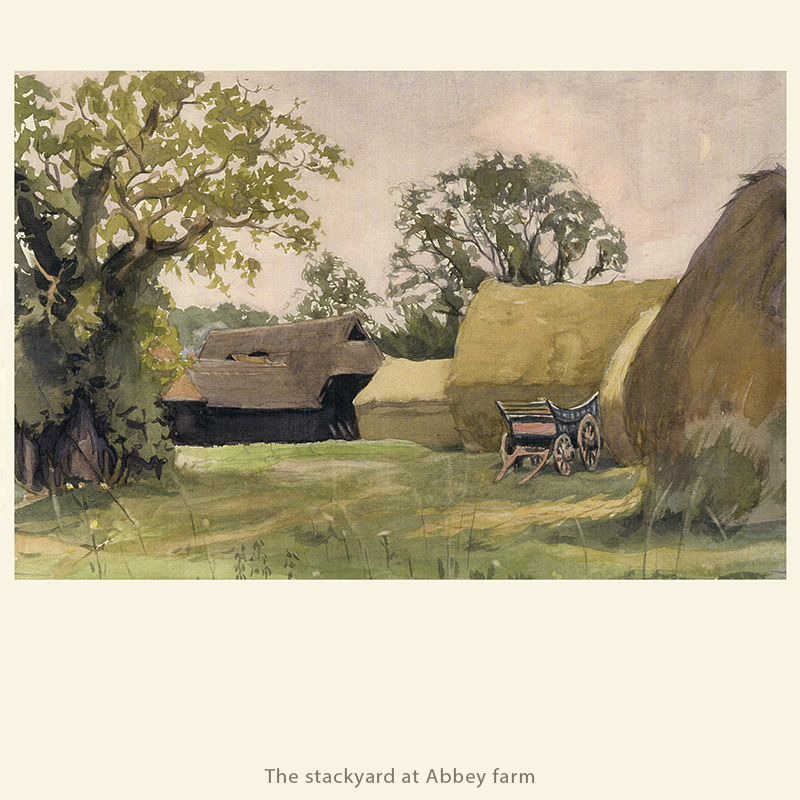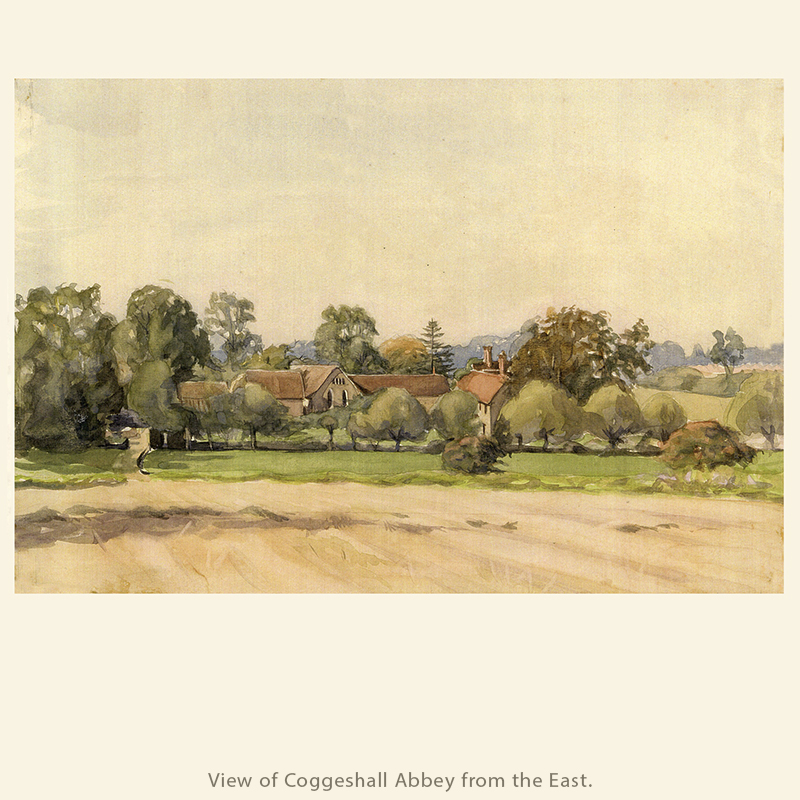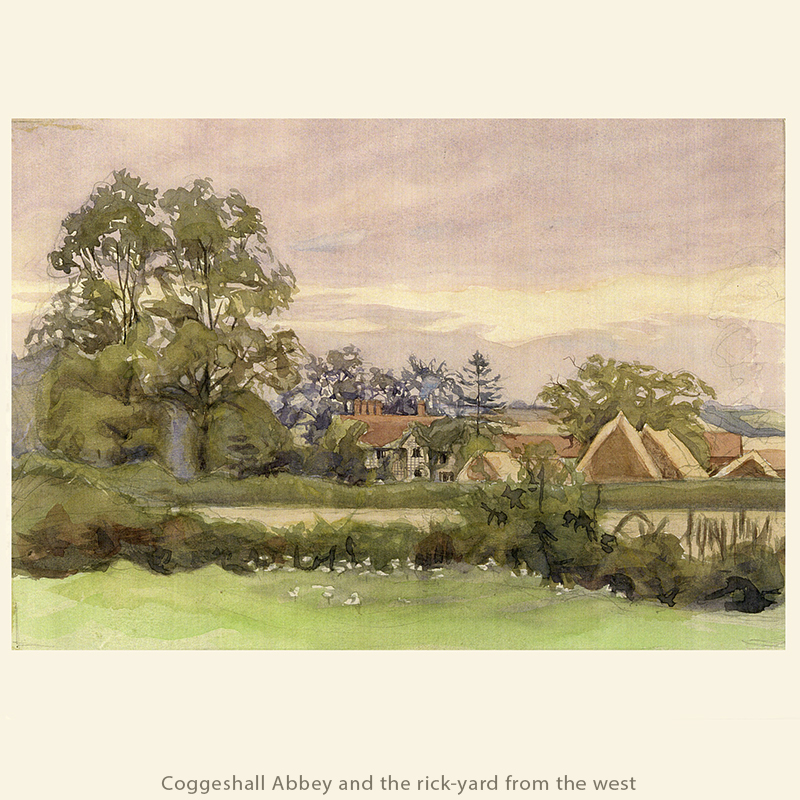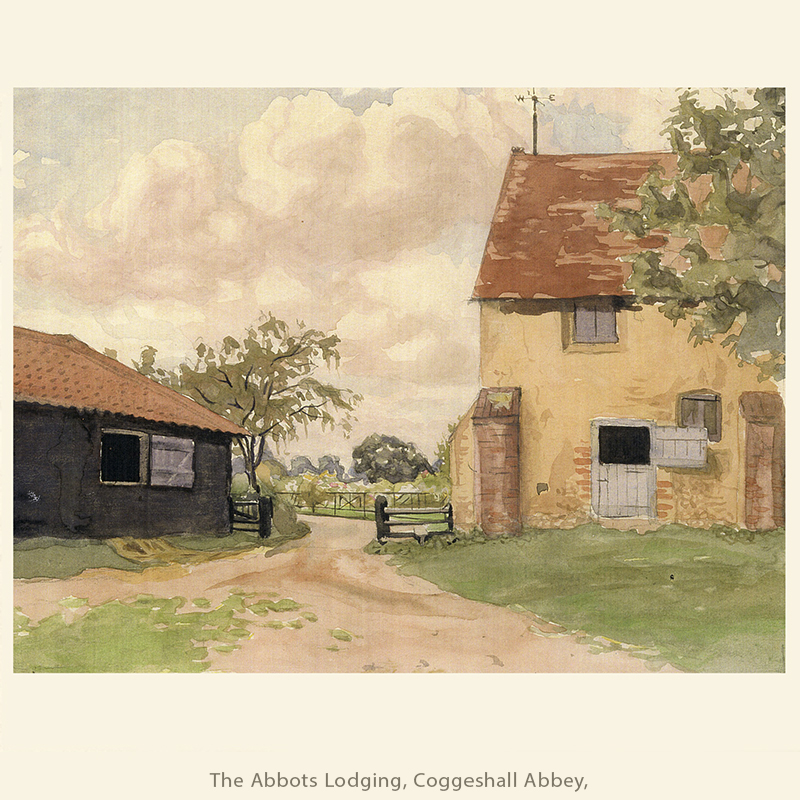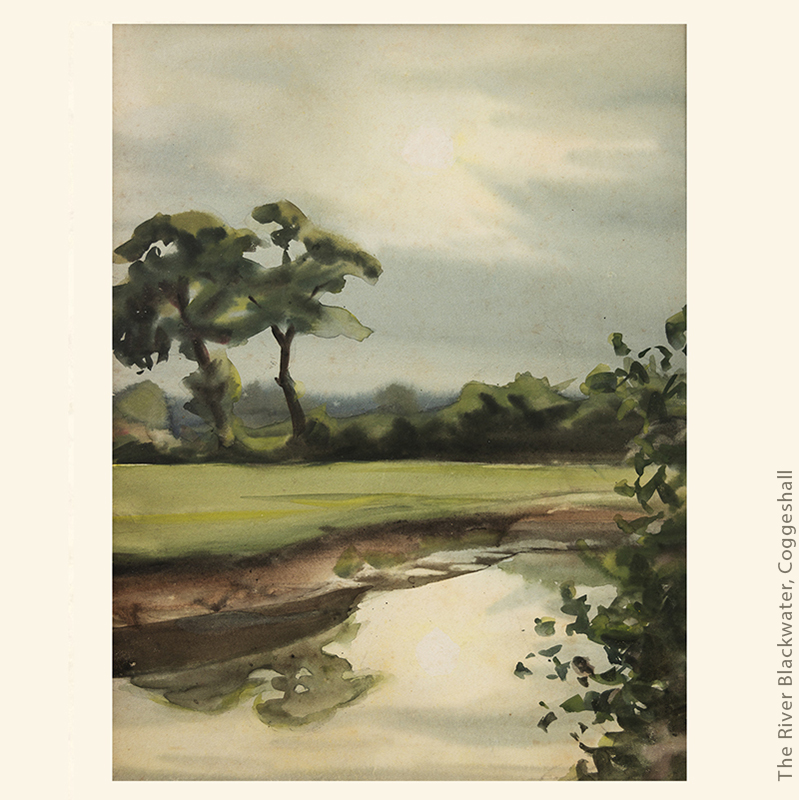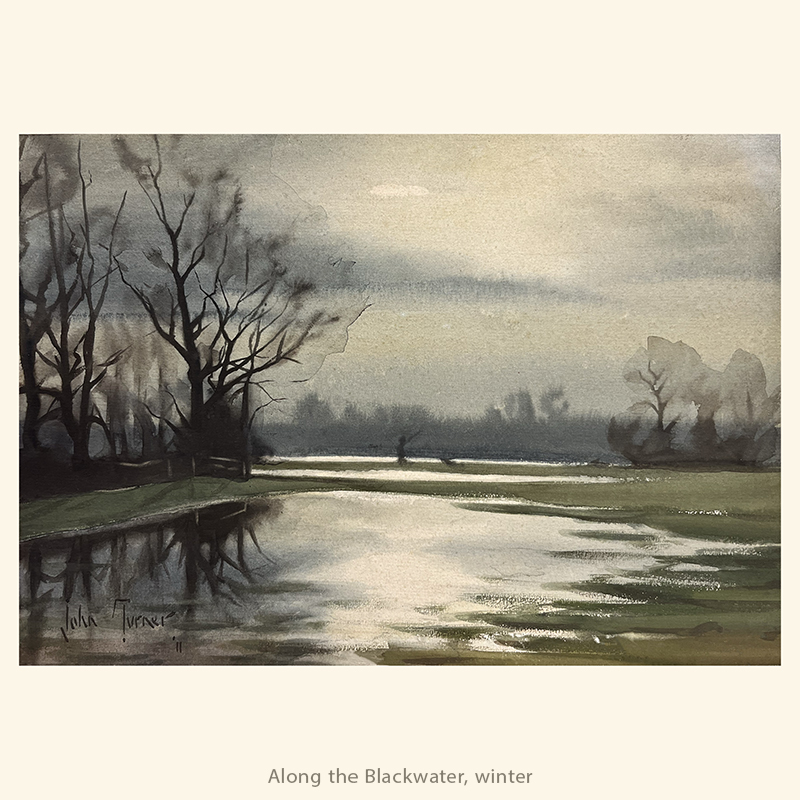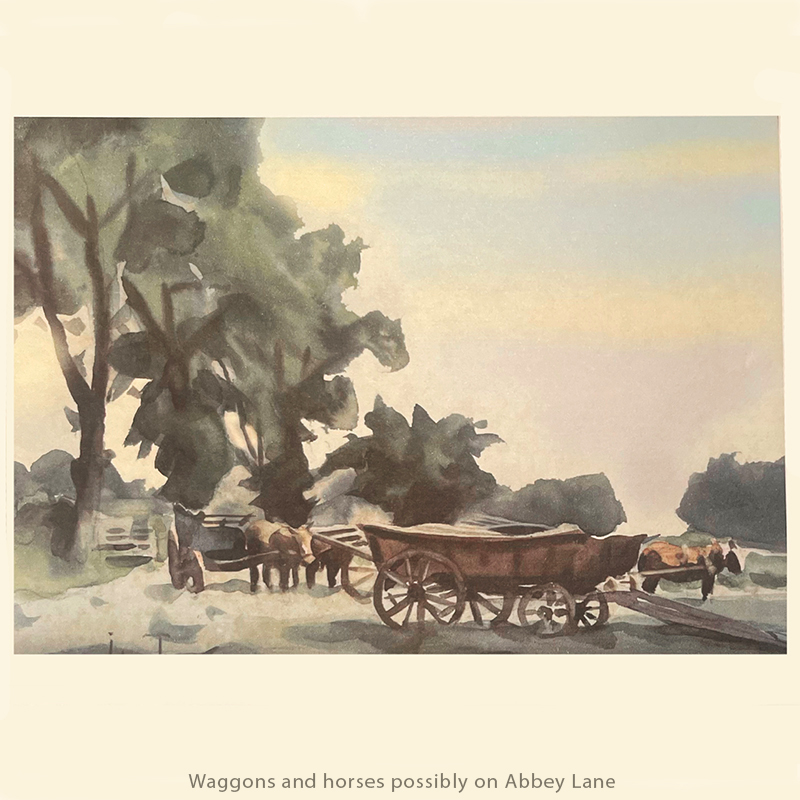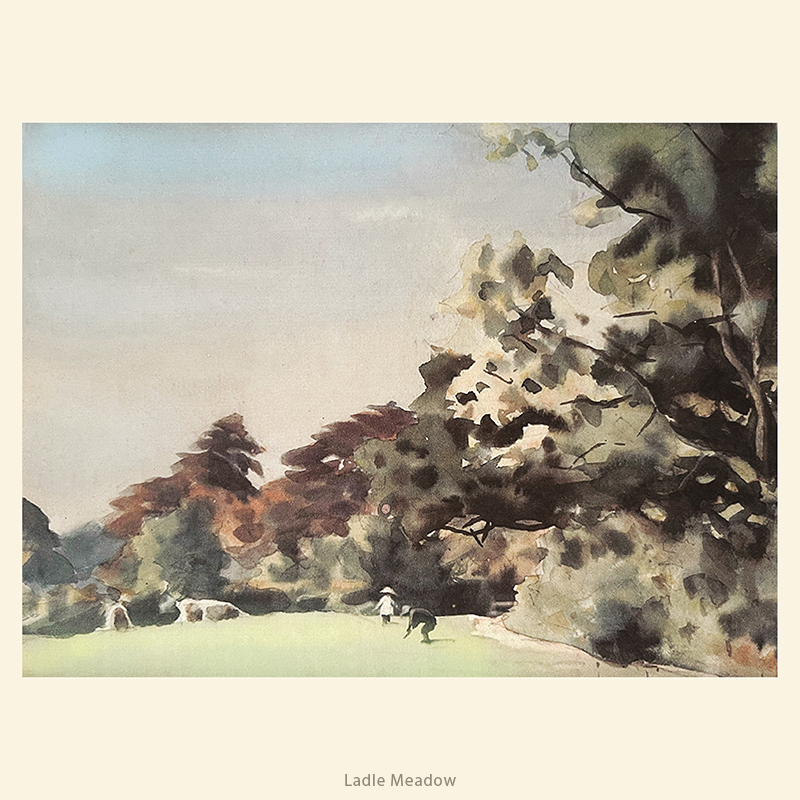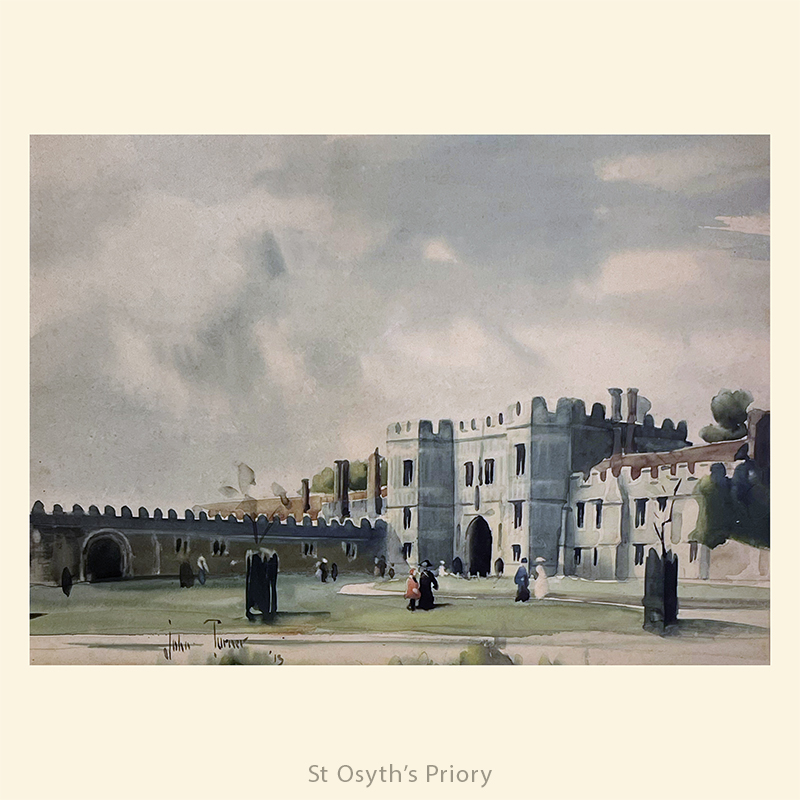JACK TURNER 1882 – 1918
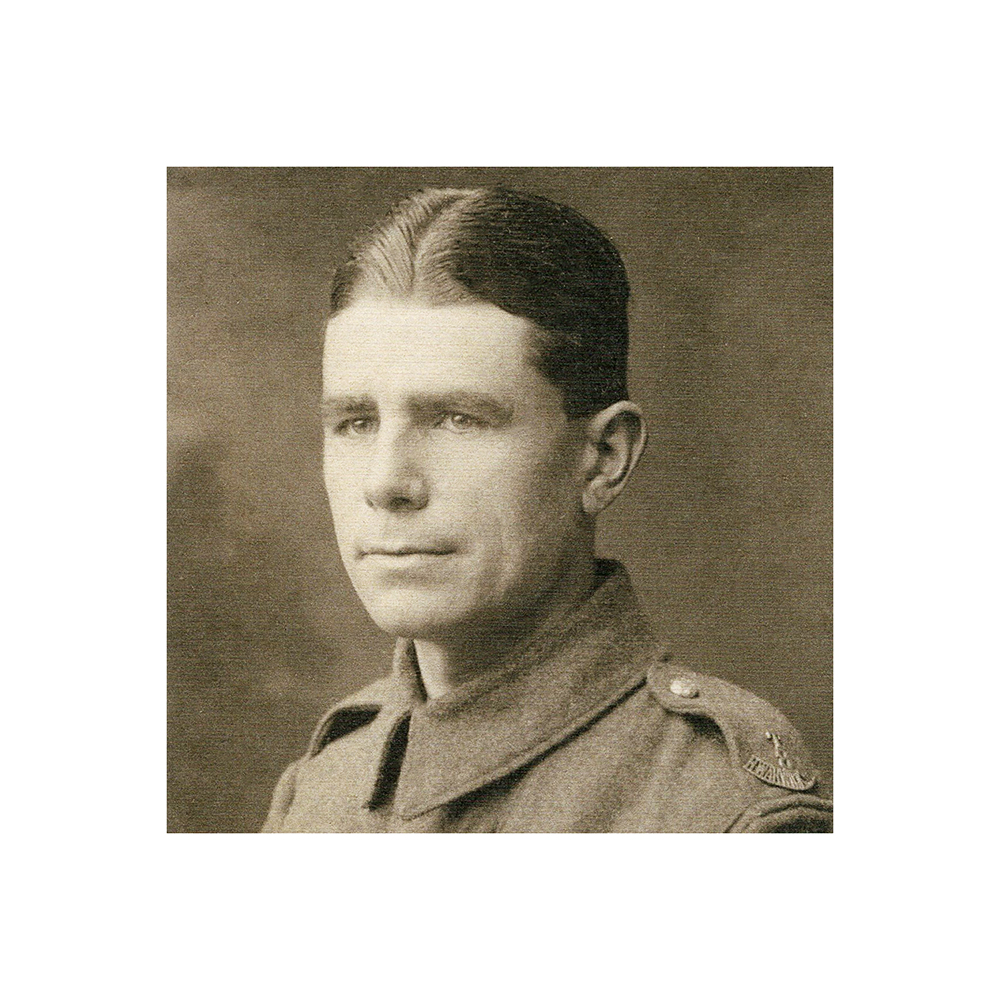
John Turner, always known as Jack, was born in Coggeshall and was the eldest son of John and Emma Turner. He was educated at the Sir Robert Hitcham School in West Street and spent much of his spare time sketching and painting in and around Coggeshall and travelling further afield whenever he had the chance. As well as landscapes Jack also enjoyed drawing portraits of his family and of Coggeshall people young and old. His portrait of Nurse Ardley, the Coggeshall midwife at the turn of the 20th century, is one of his most striking.
Jack trained as a teacher at the Coggeshall National School (his starting salary in January 1900 was £12 10s per annum) and when qualified he went on to teach in Hampstead, London. When his father fell ill he returned to Coggeshall and to the National School on Stoneham Street where he was much liked by his pupils.
In 1914 Jack joined the Saltley College Company of the 8th Royal Warwickshire Regiment, who were then billeted in Coggeshall. Despite the arduous and horrific experiences in the trenches in France, (see the account at the bottom of this page) his drawing skills were soon recognised. Jack was in demand to draw his fellow soldiers and was also commissioned by his commanding officer and a General no less – to provide illustrations for various projects, never to be completed in the carnage of war. His portraits of fellow soldiers were usually given to the men concerned and many were sent home to relatives. Five of these portraits were kept by Jack’s family and were gifted to the Royal Warwickshire (now Fusiliers) Regimental Museum.
During the war Jack rose from Private to the rank of Captain and was awarded the Military Cross and the Croix de Guerre. Tragically during an advance by the First British Army on Valenciennes he he was killed by an enemy sniper, three short weeks before the end of hostilities.
His early work was in the traditional manner but in his twenties he was experimenting with a more modern and freer style of painting but his journey to find an individual style was cut short before Jack was able to mature as an artist. A first exhibition of his work was held at the Minories Gallery in Colchester in 1960 and a second in St Peter’s Church Coggeshall in September 2018.
With thanks to Michael Turner for additional information.
From the Chelmsford Chronicle Friday 21st July 1916
COGGESHALL OFFICER’S GRAPHIC STORY.
Coggeshall has very pleasant recollections the 8th Warwicks, and it will be with mingled feelings, pride and regret that they will read the graphic story of the recent fighting in the great Anglo-French offensive contained in a letter from Lieut John Turner to his home in Coggeshall. The Lieutenant joined the 8th Warwicks when that regiment was stationed the town, and in his letter he writes:
‘The 8th that you know has emerged from one of the hottest and most awful battles in history, a memory only. The C.O. is dead. Hoskins, Fussell, Wareham, Proctor, Caddick, Washy, Boxer, James, Hands, Roy; alas, dear boys, God rest them!
We went over first, followed by a crowd of famous regular regiments. The 8th were splendid, past imagination, the Regulars and their Generals cannot say enough for the dash and spirit of our own on-rush, but we were up against one of their most formidable positions in the whole line, and they met us with a furious fire. After two or three hours’ advance, mostly crawling, I found myself in a big sort of crater trench, and heard myself greeted by Capt Martin, “Bravo, Turner, come in, man; don’t expose yourself,” and there for hours, consolidated a strong position with the help a heterogeneous crowd of famous Regulars who, having lost their own officers, clung to us (men of my own county among them). Attacked on both sides we were slowly driven back. Later, I found myself with the remnant a gallant Scots regiment. Martin again joined us, and we had orders to evacuate at dark. We had held on to a desperate position for over 12 hours. At nightfall, Capt. Martin told me to go away with my dozen or so Warwicks. We crawled painfully over the shell-rent debris, sniped at all the way. One man was hit. I came on to a wounded German, he begged for water. I tapped my empty water-bottle. ‘I have no water,’ I said, sadly. He smiled and murmured something which I would fain have caught. Oh. that awful journey. The dead and the dying, lying crawling along the road.
“In the early hours of Sunday morning I was found asleep on a doorstep in a desolate village nearby by a chaplain. He took me by the arm and made me sleep in an empty house. Next day we got together the remnants our regiment, and came here, and were greeted with bands and cheering, and the dear R.A.M.C. people have tried to kill us with kindness. I felt as if I had just got through an awful illness.
“This morning Woods Hill. Lieutenant, R.A.M.C., took me out riding before breakfast. They talk about recommending me for Captaincy, but what is personal promotion at such a time?
Please do not hesitate to show this to any Coggeshall friends who may be looking for news of our dear Warwicks. I doubt if many will hear from their own dear boys.’
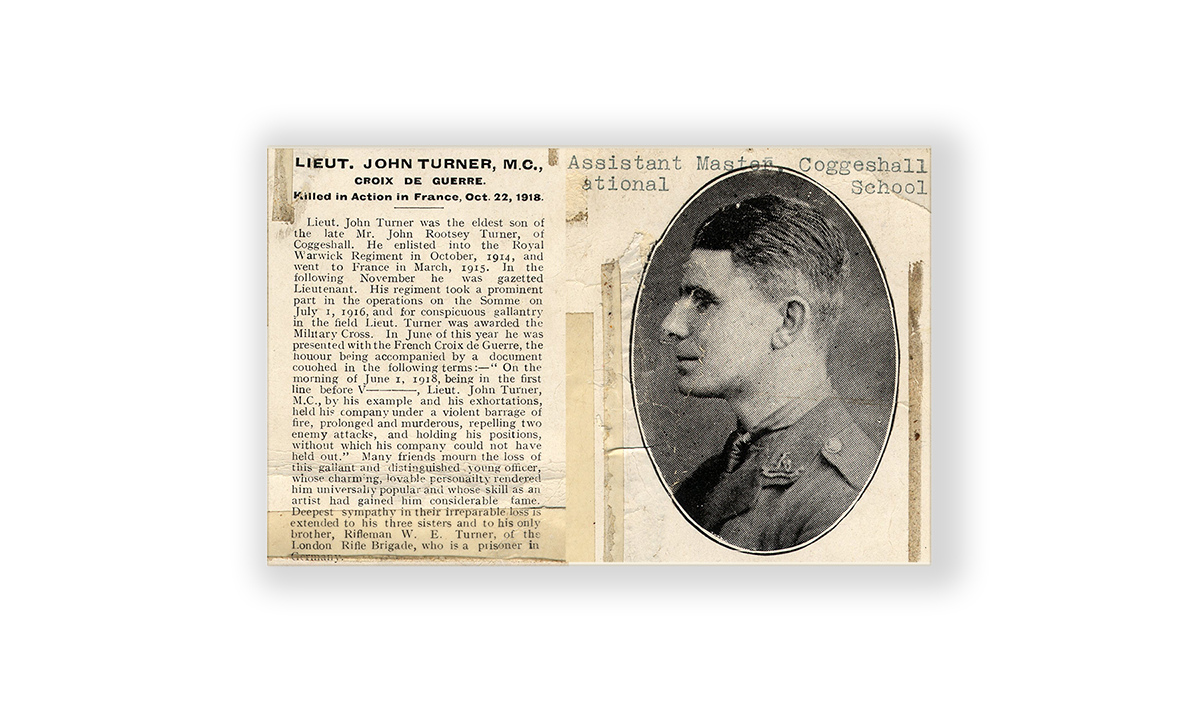
Return to the Coggeshall Artists Page
With grateful thanks to Michael Turner and the Turner family, John Roebuck, Trevor Disley and John Smith for allowing us to copy and use their paintings here.

